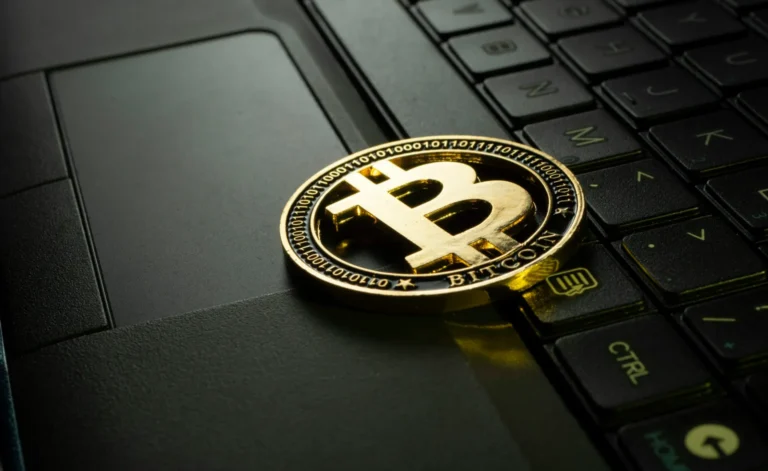
In recent months, a notable shift has taken place in the world of finance: Bitcoin’s correlation with the US stock market has reached unprecedented levels. This development has raised questions among investors and financial experts alike. What does this mean for the future of Bitcoin, traditional equities, and the broader market? Let’s explore the factors contributing to this surge in correlation and what it could signify.
The Rise of Bitcoin’s Correlation With Traditional Markets
Bitcoin has long been seen as a “safe haven” asset or a non-correlated asset class, often touted as an alternative to traditional financial instruments like stocks, bonds, and commodities. For years, the cryptocurrency’s price movements seemed independent of the fluctuations in the broader financial markets. However, recent data suggests a significant increase in the correlation between Bitcoin and US equities, especially with major indices such as the S&P 500 and the NASDAQ.
For example, over the past few months, as the stock market saw fluctuations driven by economic data, geopolitical events, and shifts in investor sentiment, Bitcoin followed a similar trajectory. In some cases, Bitcoin’s price movements were almost mirror images of the stock market’s, signaling that the once independent digital asset might be more influenced by traditional market dynamics than previously thought.
What’s Driving the Shift?
Several key factors could explain this heightened correlation between Bitcoin and the US stock market:
1. Institutional Adoption
Over the past few years, institutional interest in Bitcoin has grown significantly. Hedge funds, large investment firms, and publicly traded companies have started to invest in Bitcoin, either as a hedge against inflation or as part of their diversified portfolios. As a result, Bitcoin’s price movements have become more closely tied to traditional market trends. These institutional players tend to respond to macroeconomic events, such as interest rate changes or inflation fears, in a manner similar to how they react to stock market changes, which might be driving Bitcoin’s newfound connection with stocks.
2. Macro-Economic Influences
Both Bitcoin and the US stock market are sensitive to macroeconomic developments. For example, rising inflation, changes in Federal Reserve policies, or global economic uncertainty can trigger price volatility in both markets. The increase in Bitcoin’s correlation with US stocks could be reflective of investors viewing both assets as risk-on or risk-off investments, depending on the prevailing economic climate.
3. Bitcoin’s Transition into a Digital Asset Class
Bitcoin’s image is gradually evolving from a speculative digital currency to a more established digital asset class, similar to commodities or stocks. This shift means that Bitcoin is increasingly viewed through the lens of traditional market factors, such as interest rates, liquidity, and investor risk appetite, rather than as an isolated asset class. As Bitcoin’s market capitalization continues to rise, it becomes harder for it to operate independently from the broader financial system.
4. Investor Sentiment and Behavioral Finance
Investor behavior has also played a significant role in the rising correlation. Many retail and institutional investors have adopted similar risk-on, risk-off approaches when managing their portfolios. In times of economic uncertainty or stock market volatility, investors may flock to assets like Bitcoin as a potential store of value, leading to more synchronized price movements.
What Does This Mean for Bitcoin’s Future?
The growing correlation between Bitcoin and the stock market raises some important questions about the future trajectory of both markets. For Bitcoin, it suggests that the digital currency may be increasingly seen as a risk asset, rather than the “digital gold” it was once touted to be.
This could have several implications for Bitcoin’s volatility and market behavior. For one, it may become more susceptible to large-scale sell-offs during times of stock market distress, as investors may liquidate assets across the board to cover margin calls or reduce exposure to risk.
Conversely, Bitcoin could benefit from broader market rallies. As the stock market strengthens and risk appetite returns, Bitcoin might see more upward momentum, driven by increased investment interest.
The Bottom Line
While Bitcoin’s correlation with the US stock market is at an all-time high, the evolving relationship between these two markets is still in its early stages. It’s important to remember that Bitcoin is a volatile and speculative asset that could revert to behaving independently as market conditions change. However, as institutional adoption grows and Bitcoin becomes further integrated into the global financial system, its price may continue to be influenced by traditional market forces, leading to further convergence in market behavior.
For investors, this new phase of Bitcoin’s development calls for a more nuanced approach to portfolio diversification, balancing traditional and digital assets while keeping a keen eye on macroeconomic developments. The evolving correlation between Bitcoin and the stock market is a testament to how the cryptocurrency market is maturing, but it also serves as a reminder that in the world of finance, change is the only constant.





